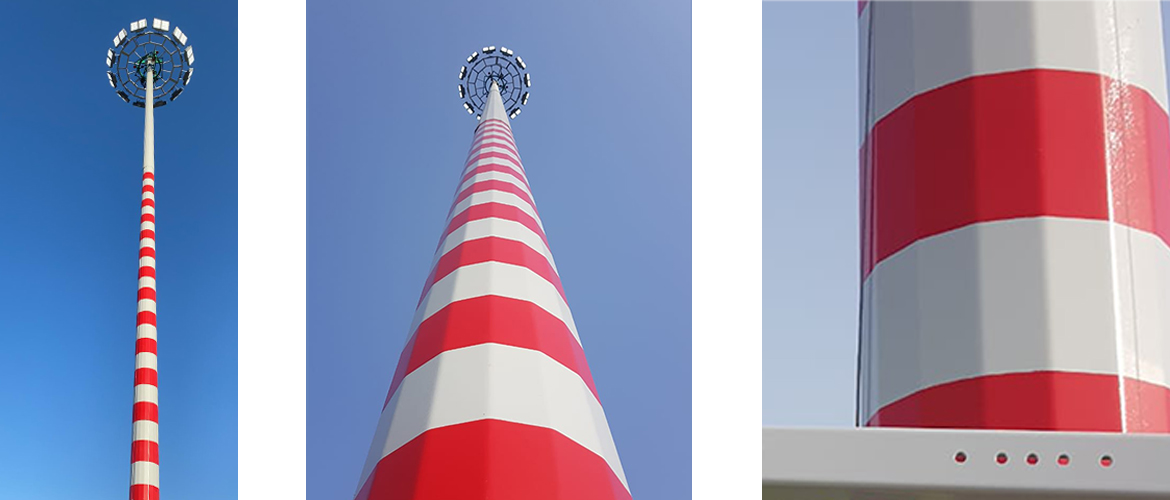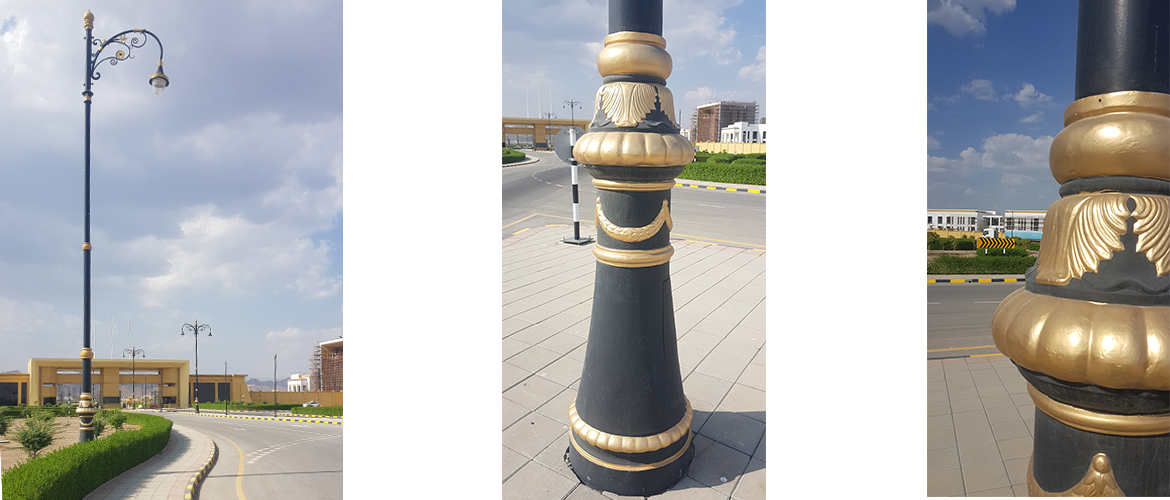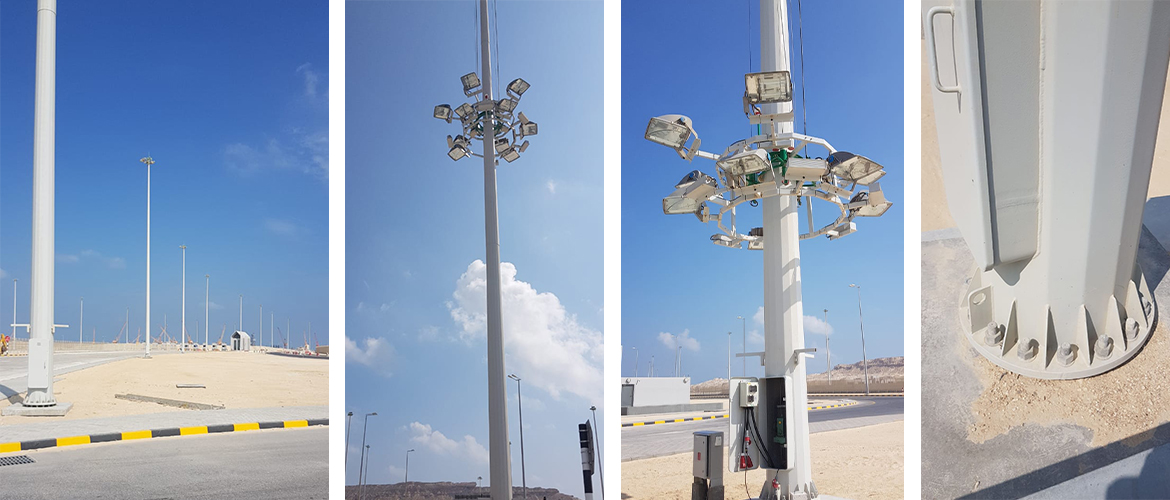Marine Coated Poles
For extra protection against the region climatic conditions SLP provides optionally A marine coating over the HDG.
Marine coated poles, also known as marine-grade coated poles or marine-grade poles, refer to structural poles that are specifically designed and treated to withstand the harsh conditions of marine environments. These poles are commonly used in various marine applications such as piers, docks, marinas, and other waterfront structures.
The primary purpose of marine coating is to protect the poles from corrosion and degradation caused by exposure to saltwater, moisture, UV radiation, and other corrosive elements present in marine environments. The coating acts as a barrier between the metal surface of the pole and the surrounding environment, preventing direct contact and minimizing the potential for rust and deterioration.
Marine coatings are typically made of specialized materials that provide excellent corrosion resistance. One common type of marine coating is epoxy-based coatings, which are known for their high durability and resistance to water, chemicals, and abrasion. These coatings create a tough, impermeable layer that shields the pole from the damaging effects of the marine environment.
Marine coated poles, also known as marine-grade coated poles or marine-grade poles, refer to structural poles that are specifically designed and treated to withstand the harsh conditions of marine environments. These poles are commonly used in various marine applications such as piers, docks, marinas, and other waterfront structures. The primary purpose of marine coating is to protect the poles from corrosion and degradation caused by exposure to saltwater, moisture, UV radiation, and other corrosive elements present in marine environments. The coating acts as a barrier between the metal surface of the pole and the surrounding environment, preventing direct contact and minimizing the potential for rust and deterioration. Marine coatings are typically made of specialized materials that provide excellent corrosion resistance. One common type of marine coating is epoxy-based coatings, which are known for their high durability and resistance to water, chemicals, and abrasion. These coatings create a tough, impermeable layer that shields the pole from the damaging effects of the marine environment. Another type of marine coating is thermally sprayed aluminum (TSA) coating. This process involves spraying molten aluminum onto the surface of the pole, creating a protective layer that resists corrosion and provides excellent adhesion. TSA coatings are highly effective in marine environments due to their ability to withstand saltwater exposure and provide long-lasting protection.
The thickness of the marine coating can vary depending on the specific application and the level of protection required. Thicker coatings generally offer greater resistance to corrosion but may be more expensive. The coating is applied to the entire surface of the pole, including both the exterior and interior, to ensure comprehensive protection.




